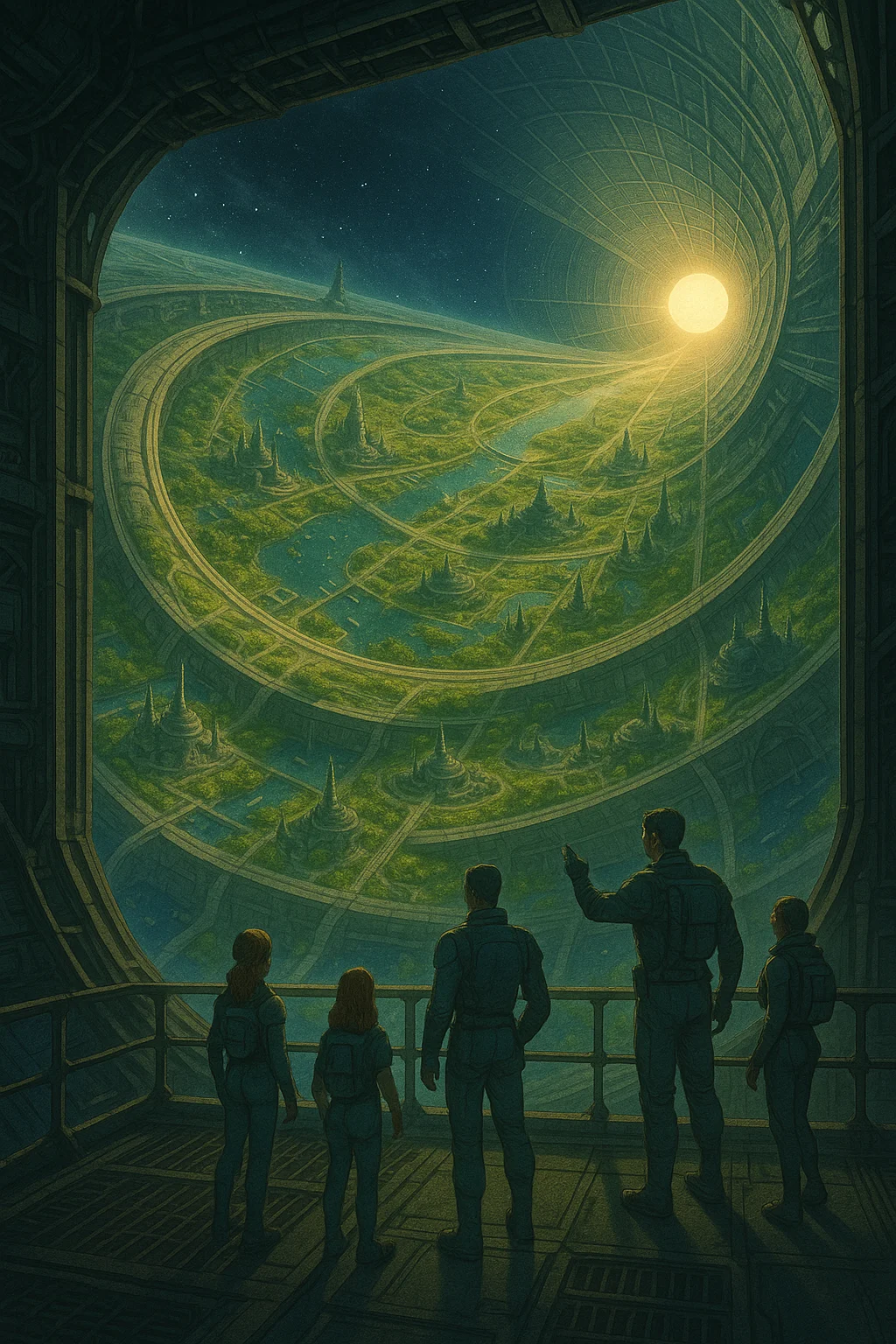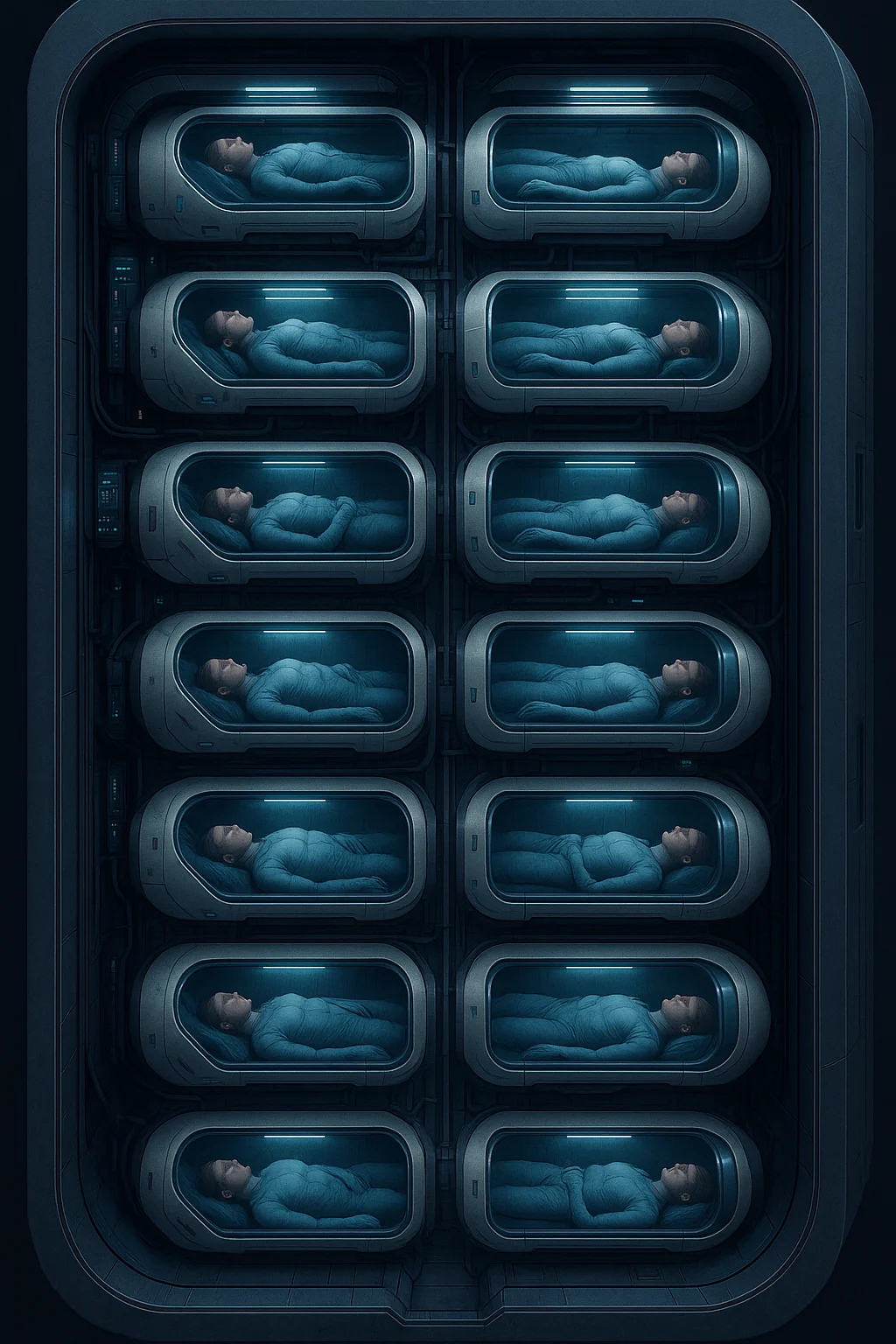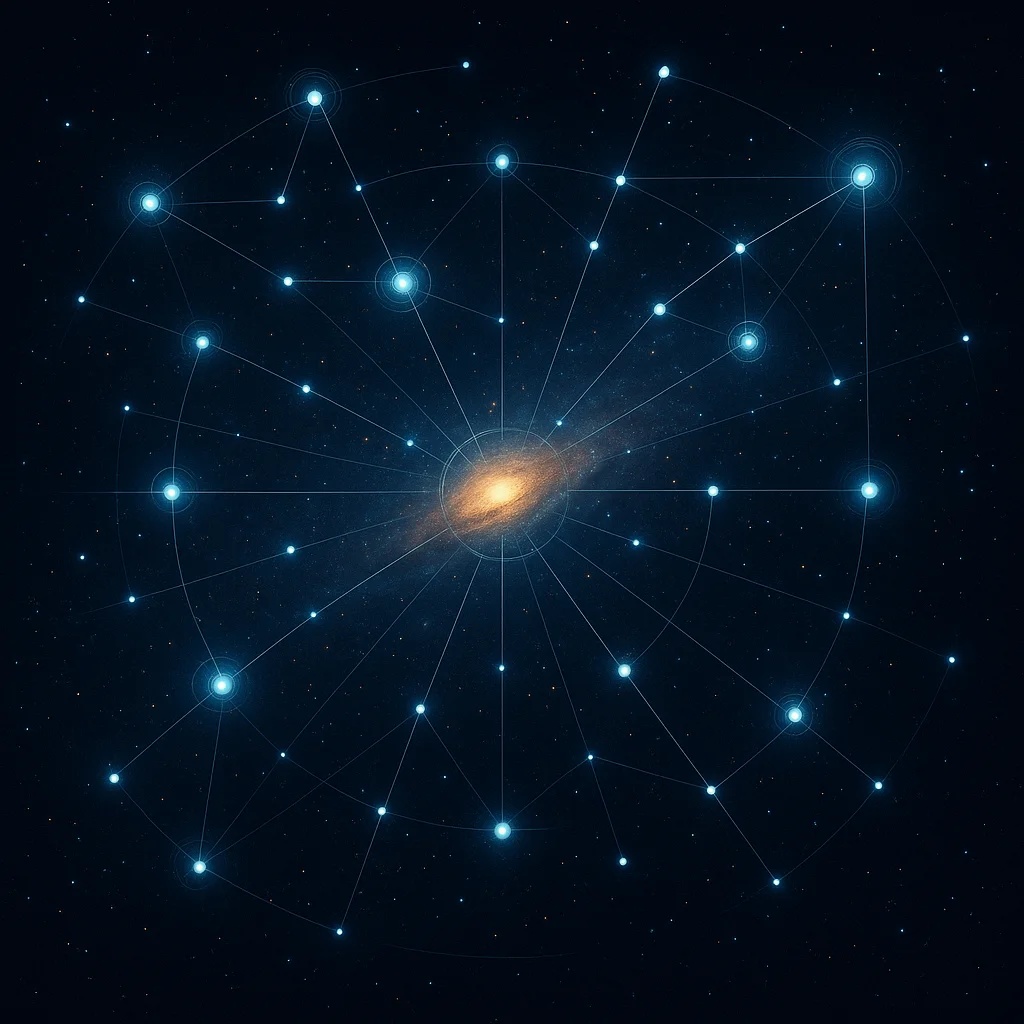The stars call to us across impossible distances, each point of light a potential new home for humanity. Interstellar colonization represents our species' ultimate adventure—not just traveling between stars, but establishing permanent, self-sustaining civilizations light-years from Earth. It's a journey measured not in years but in generations, demanding technologies we're only beginning to imagine and a commitment that transcends individual lifetimes.

The Interstellar Challenge
The distances between stars dwarf all human experience. Proxima Centauri, our nearest stellar neighbor, lies 4.24 light-years away—about 40 trillion kilometers. At the speed of our fastest spacecraft, Voyager 1 (17 km/s), the journey would take 73,000 years.
Even at more ambitious speeds:
- 1% light speed: 424 years to Proxima Centauri
- 10% light speed: 42.4 years
- 50% light speed: 8.5 years (plus acceleration/deceleration)
- 99% light speed: 4.3 years (with extreme relativistic effects)
Each approach presents unique challenges in propulsion, life support, and the fundamental question of how to maintain human civilization across such vast timescales.
Generation Ships: Cities Between Stars
The most straightforward approach to interstellar colonization involves ships where multiple generations live and die during the journey. These "world ships" would be self-contained ecosystems carrying everything needed to sustain human life for centuries.
Design Requirements
- Size: Kilometers in length to house thousands of people
- Ecology: Closed-loop life support with agriculture and waste recycling
- Redundancy: Multiple backup systems for all critical functions
- Resources: Raw materials for maintenance and growth
- Shielding: Protection from cosmic radiation and micrometeoroids
Social Challenges
Generation ships face unique sociological problems:
- Generation Gap: First generation chose the journey; their descendants didn't
- Cultural Drift: Society evolving in isolation from Earth
- Authority: Governance across centuries without external oversight
- Purpose: Maintaining mission focus across generations
- Skills Retention: Preserving knowledge that won't be used for centuries
"The real challenge of generation ships isn't engineering—it's creating a society stable enough to survive centuries in a tin can between the stars." — Kim Stanley Robinson, Science Fiction Author
Population Dynamics
Studies suggest minimum viable populations:
- Genetic Diversity: 160-500 individuals with careful breeding management
- Skill Diversity: 2,000+ for maintaining technological civilization
- Social Stability: 10,000+ for robust society with choices
- Growth Management: Careful balance to avoid overpopulation
Suspended Animation: Sleeping to the Stars
If we could pause human metabolism, crews could sleep through the centuries-long journey, arriving at their destination without aging significantly.
Approaches to Suspended Animation
Cryonic Preservation
- Cooling to -196°C using liquid nitrogen
- Vitrification to prevent ice crystal damage
- Current status: Preservation possible, revival unproven
- Challenges: Cellular damage, revival technology
Metabolic Suppression
- Reducing metabolism to 1-5% of normal
- Inspired by hibernating animals
- Shorter duration (months to years)
- Less extreme than full cryonics
Synthetic Biology
- Genetically engineering humans for suspension
- Incorporating genes from tardigrades or wood frogs
- Creating reversible cryptobiosis states
- Far future technology
Sleeper Ship Advantages
- Smaller crews and life support systems
- No generational social problems
- Reduced psychological stress
- Original crew arrives at destination

Embryo Ships: Seeding the Stars
Rather than transporting adult humans, embryo ships would carry frozen embryos or artificial wombs, with robotic systems raising the first generation upon arrival.
Advantages
- Mass Efficiency: Millions of embryos weigh less than one adult
- No Life Support: During transit, only equipment needs maintenance
- Genetic Diversity: Can carry entire gene pools
- Fresh Start: Colonists adapted to destination from birth
Challenges
- Artificial Parenting: AI must raise and educate first generation
- Cultural Transmission: How to pass on human culture?
- Psychological Development: Children need human contact
- Ethical Questions: Consent and identity issues
Seed Ships: Digital DNA
The ultimate in efficiency: transmit genetic information as data, synthesize organisms at destination.
- Transmission: Send data at light speed to receiver probes
- Synthesis: 3D print organisms from raw materials
- Advantages: Fastest possible "travel" time
- Requirements: Extremely advanced biotechnology
Propulsion: The Engine Problem
Fusion Rockets
- Specific Impulse: 100,000+ seconds
- Max Speed: 3-10% light speed
- Fuel: Deuterium/Helium-3
- Status: Theoretical, requires fusion breakthrough
Antimatter Propulsion
- Specific Impulse: Millions of seconds
- Max Speed: 40-60% light speed
- Fuel: Matter-antimatter annihilation
- Status: Requires antimatter production breakthrough
Bussard Ramjet
- Concept: Collect interstellar hydrogen for fuel
- Max Speed: Potentially near light speed
- Advantage: No need to carry fuel
- Challenge: Requires enormous collection area
Light Sails
- Propulsion: Laser or solar pressure
- Max Speed: 10-20% light speed
- Advantage: No onboard fuel needed
- Challenge: Deceleration at destination
Target Selection: New Homes Among the Stars
Criteria for Colonization
- Habitable Zone: Liquid water possible on planetary surfaces
- Stellar Stability: Main sequence stars like our Sun
- Planetary Composition: Rocky worlds with atmospheres
- Absence of Hazards: No nearby supernovae or black holes
- Distance: Closer is better for first attempts
Prime Candidates
Proxima Centauri b
- Distance: 4.24 light-years
- Rocky planet in habitable zone
- Tidally locked (permanent day/night sides)
- Red dwarf star (flare activity concern)
TRAPPIST-1 System
- Distance: 39.5 light-years
- Seven terrestrial planets
- Three in habitable zone
- Ultra-cool dwarf star
Kepler-452b
- Distance: 1,400 light-years
- "Earth's cousin" - similar size and orbit
- Sun-like star
- Much more distant but promising

Colony Establishment: Building New Worlds
Phase 1: Arrival and Assessment
- Orbital surveys of planet and system
- Atmospheric and geological analysis
- Identification of resources and hazards
- Selection of landing sites
Phase 2: Initial Settlement
- Deployment of robotic builders
- Construction of basic habitats
- Establishment of life support systems
- Resource extraction begins
Phase 3: Growth and Adaptation
- Population expansion
- Development of local industry
- Adaptation to local conditions
- Cultural evolution
Phase 4: Self-Sufficiency
- Complete industrial base
- Closed ecological systems
- Independent technological development
- Potential for launching own colonies
The Sociology of Stellar Colonies
Cultural Divergence
Isolated by light-years and centuries, colonies will inevitably develop unique cultures:
- Language Evolution: New dialects and eventually new languages
- Social Structures: Adapted to local conditions and challenges
- Technology Paths: Different solutions to different problems
- Biological Adaptation: Evolution in response to new environments
Communication Challenges
With years or decades between messages:
- No real-time governance from Earth
- Cultural exchange becomes historical record
- Emergency assistance impossible
- Each colony essentially independent from founding
The Human Diaspora
Over millennia, humanity could spread across thousands of star systems, each developing independently. The result: not one human civilization but thousands, adapted to their local environments, possibly diverging into separate species.
Ethical Considerations
Planetary Ethics
- What if the planet has primitive life?
- Rights of indigenous microbes vs. human expansion
- Contamination and preservation protocols
- Terraforming vs. adaptation debates
Selection Ethics
- Who gets to go? Selection criteria and fairness
- Genetic screening and enhancement
- Cultural representation and diversity
- Rights of those left behind
Future Generation Rights
- Consent of unborn colonists
- Genetic modification for adaptation
- Cultural preservation vs. evolution
- Connection to Earth heritage
The Timeline of Expansion
Near Term (2050-2150)
- Robotic interstellar precursor missions
- Development of fusion propulsion
- Closed ecosystem experiments
- Target system characterization
Medium Term (2150-2300)
- First generation ship launch
- Multiple robotic seed missions
- Suspended animation breakthroughs
- Interstellar communication networks
Long Term (2300-3000)
- First colonies established
- Regular interstellar missions
- Second-generation colonies
- Divergent human civilizations
Far Future (3000+)
- Thousands of human worlds
- Possible reunification via FTL
- Galactic human civilization
- Contact with alien species?
The Ultimate Destiny
Interstellar colonization represents humanity's bid for cosmic immortality. By spreading across the stars, we ensure that no single catastrophe—no asteroid, plague, war, or dying sun—can end our story. Each colony becomes a new chapter, written in the unique conditions of alien worlds.
The challenges are immense: distances that dwarf comprehension, technologies we've yet to invent, social problems we've never faced. But the reward matches the challenge—the survival and infinite diversity of human consciousness spreading through the galaxy.
Perhaps our descendants will look back at Earth as we look at Africa—the cradle from which we spread across a world. Only their world will be the entire galaxy, and their diversity will encompass adaptations we can't imagine: humans who breathe methane, who live in zero gravity, who see in infrared, who think in ways shaped by alien stars.
The journey begins with a single step—or in this case, a single star. Whether that step comes in fifty years or five hundred, whether we travel in generation ships or as frozen embryos or as transmitted data, one truth remains: the stars are our destination, and we will find a way to reach them.
In the end, interstellar colonization isn't just about survival or expansion. It's about becoming what we're meant to be—a species that transcends its birthworld, carrying the light of consciousness into the cosmic dark, ensuring that somewhere among the stars, humanity endures, explores, and dreams of journeys yet to come.